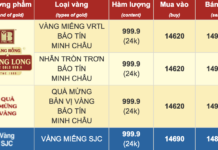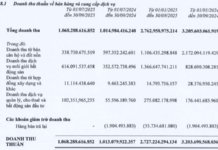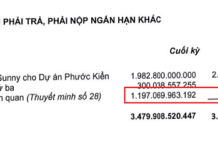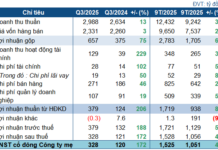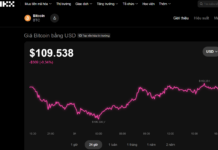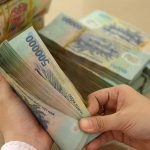
Illustrative image
HD Saison records $601 million in profit for H1 2024, with FE Credit and Mcredit showing positive signals
At a recent investor conference, Mr. Dam The Thai, Deputy General Director of HD Saison, announced that the company’s pre-tax profit reached VND 601 billion in the first half of 2024, doubling that of the same period last year (VND 314 billion) and nearly equaling the full-year 2023 profit (VND 660 billion).
HD Saison’s total operating income (TOI) in the first half of 2024 reached VND 3,265 billion, a 10.5% increase compared to the previous year.
By the end of the second quarter, HD Saison’s loan balance increased by nearly 8.7% year-on-year to VND 16,939 billion. The growth in new customers reached nearly 20%.
In terms of loan portfolio structure, cash loans continued to account for more than 53% of the total outstanding balance, motorcycle loans accounted for 19%, electronics loans were at 24.4%, and other loans made up 3.2%. However, the ratio of cash loans as defined by the State Bank of Vietnam (SBV) stood at 25.6%, below the maximum threshold of 30%.
According to HD Saison’s Deputy General Director, in the first half of 2024, the company focused on purchase loans, mainly for motorcycles and electronics. Cash loans were targeted towards existing borrowers with a good repayment history. The company’s non-performing loan balance currently stands at VND 1,272 billion, corresponding to a non-performing loan ratio of 7.5%. This result shows a slight improvement compared to the same period last year and the end of 2023.
Regarding business prospects, HD Saison’s Deputy General Director shared that the company aims for a 25% credit growth in 2024 with a pre-tax profit target of VND 1,000 billion.
“With the positive results in the first half of the year, achieving or surpassing the VND 1,000 billion target is highly feasible, and the 25% credit growth goal is not overly challenging,” said Mr. Thai.
Not only HD Saison, but other major financial companies also expressed positive expectations for their business prospects in 2024.
At the 2024 Annual General Meeting of Shareholders, VPBank’s General Director, Nguyen Duc Vinh, emphasized that Vietnam remains a potential market for consumer finance. He affirmed that FE Credit will return to its growth trajectory in 2024. This year, FE Credit targets a profit of VND 1,200 billion, with credit balance expected to exceed VND 66,500 billion. These are ambitious plans for the financial company after incurring heavy losses in 2022 and 2023.
Although FE Credit has not yet published its financial results for the first six months of 2024, based on VPBank’s consolidated and separate profit figures, several analytical units estimate that the financial company has started making profits again, contributing to the overall results of the entire corporation.
At Mcredit, the company has also set a profit plan for 2024 that is twice as high as that of 2023. Mcredit is currently adjusting its debt collection model, coordinating with external partners to improve debt handling quality. In addition, they are focusing on lending to customers with data (from the parent bank) to control risks.
Positive outlook for the consumer finance industry
In a recently published analysis report, Viet Capital Securities (VCSC) stated that lower interest rates and an economic recovery would boost customer demand and repayment ability, thereby supporting the lending margin of financial companies in 2024.
According to VCSC, the non-performing loan ratio of FE Credit, HDSaison, and MCredit showed signs of improvement in the past two quarters due to the proactive debt handling strategies implemented by these companies.
VCSC expects the non-performing loan ratio of consumer finance companies to improve in 2024 due to stronger credit growth in the remaining months of the year. This improvement will be supported by enhanced credit assessment processes and a better economic situation, while lower interest rates will facilitate the repayment ability of consumer finance customers.
In the long term, VCSC believes that consumer finance remains an attractive business segment based on Vietnam’s demographic characteristics. The analysis team cited data from the General Statistics Office, indicating that as of Q1/2024, there were 33.3 million people (accounting for nearly 65% of Vietnam’s labor force) working in the informal sector. Additionally, Vietnam’s bank penetration rate in 2023 was significantly lower than that of other Asian countries (according to Statista). These factors reflect the untapped potential of Vietnam’s underbanked market, offering a vast customer base for consumer finance companies to tap into.
Similarly, market research firm FiinGroup also assessed that Vietnam’s consumer finance market still holds significant development prospects. Vietnam’s consumer credit scale is just over 10% of GDP, much lower than many countries and territories such as South Korea at over 40% of GDP and Hong Kong (China) at over 20%…
Moreover, FiinGroup stated that with the prominent recovery of the economy, 2024 would pave the way for a rebound in the consumer finance sector, driven by expanding purchasing power, increasing credit demand, and improving household income.
Concurrently, FiinGroup’s experts suggested that 2024 would usher in a new phase of credit growth, emphasizing prudence in disbursement activities and a focus on sustainable growth rather than the rapid growth witnessed in previous years.
The city with the highest number of residents and businesses depositing money in banks, accounting for over 1/3 of the whole country
The total raised capital of financial institutions in the city by the end of January 2024 is estimated to reach 5.23 quadrillion VND, increasing by 0.9% compared to the end of 2023, with the deposit amounting to 4.62 quadrillion VND.










